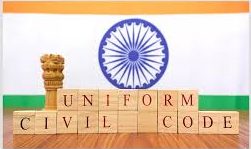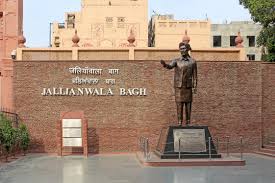A Uniform Civil Code (UCC) refers to a set of laws that apply equally to all citizens of a country, irrespective of their religious beliefs. The idea is to have a common civil code for everyone, ensuring that issues like marriage, divorce, maintenance, inheritance, adoption, and succession are governed by the same legal framework. The underlying principle of the UCC is that law and religion should be separate in modern society, ensuring equality and uniformity in legal matters across all communities.
Article 44 of the Indian Constitution, under the Directive Principles of State Policy, emphasizes that the state shall strive to secure a Uniform Civil Code (UCC) for all its citizens across the country. This provision urges the government to work towards implementing a common set of laws governing marriage, divorce, inheritance, and other civil matters for all communities, irrespective of their religion.
UCC is often viewed as a step towards a more secular and equitable society, aligning with the ideals enshrined in the Indian Constitution.
The history of the Uniform Civil Code (UCC) in India is indeed complex and multifaceted. It’s interesting how it evolved from colonial times, when there was a push for uniformity in legal codes, to the present-day debates that consider both equality and diversity. The involvement of women activists, especially in the early 20th century, highlights a significant aspect—UCC was seen as a means to bring gender equality, especially in personal laws.
The fact that B.R. Ambedkar was a strong proponent of the UCC shows how deeply embedded it was in the vision of a modern, secular India. However, the inclusion of the UCC as a non-enforceable Directive Principle under Article 44 reflected a practical compromise, recognizing the challenges of implementing a uniform law across a culturally and religiously diverse society.
Post-independence, the Hindu Code Bills were a major step in codifying personal laws, yet the debate continued, especially with high-profile cases like Shah Bano, Sarla Mudgal, and Shayara Bano, which forced the issue back into the public and judicial discourse. It’s clear that the call for a UCC is not just about legal uniformity but also touches on issues of gender justice, religious freedom, and the balance between individual rights and community identity.
What’s your take on the UCC debate? Do you think it’s possible to find a middle ground between uniformity and preserving cultural/religious diversity?
There is a clear picture of the diverse legal landscape in India, where personal laws are governed by religion-specific codes, while secular laws like the Special Marriage Act serve to bridge the gap for those seeking to marry outside their religious frameworks.
The codified Hindu Personal Laws have been instrumental in shaping the legal status of women in Hindu communities, although debates continue on their applicability in today’s context. The inclusion of Sikhs, Jains, and Buddhists under Hindu law shows the complexity of the term “Hindu” in Indian legal contexts.
On the other hand, Muslim Personal Law, being largely based on religious texts, lacks codification to the same degree, which has led to calls for reform and greater uniformity. The specific Acts like the Shariat Application Act and the Dissolution of Muslim Marriages Act have had a significant role in shaping the legal landscape for Muslims, but there’s ongoing discussion around whether further reforms are needed.
Christian Personal Law, which primarily focuses on marriage and divorce, is another distinct area. It’s interesting how it continues to be governed by laws that date back to colonial times, yet still plays an essential role in Christian communities in India.
Then, we have the Special Marriage Act, which facilitates interfaith marriages and gives a neutral legal platform to those who wish to marry outside their religious fold. The Guardians and Wards Act further shows the shift toward secular laws, especially regarding child custody and guardianship.
The exceptions for certain states under Article 371, designed to protect regional identities, add another layer of complexity. States like Assam, Nagaland, and Mizoram have unique customs and laws that often do not follow the general civil law framework, making the idea of a Uniform Civil Code harder to apply universally.
The Supreme Court’s landmark judgments on the Uniform Civil Code (UCC) indeed play a pivotal role in shaping the debate around legal uniformity, gender equality, and the protection of individual rights in India. Each of these cases highlights different aspects of personal laws and the Court’s efforts to align them with constitutional principles of equality and justice.
The Shah Bano case was a turning point in the debate on the UCC. The Court’s ruling, which granted Shah Bano maintenance under Section 125 of the CrPC, was seen as a strong assertion of a woman’s right to maintenance after divorce. This decision not only emphasized the need for gender equality but also led to a national conversation about the intersection of religion and personal law. The political and societal backlash that followed, particularly the passing of the Muslim Women (Protection of Rights on Divorce) Act, 1986, demonstrated the difficulty of implementing a UCC in a society with deeply entrenched religious practices.
Sarla Mudgal v. Union of India (1995) further clarified the dangers of inconsistent application of personal laws, especially when religious conversions are used to circumvent laws like the prohibition on polygamy. The Court’s emphasis on a UCC to eliminate legal loopholes and bring uniformity showed that personal laws sometimes lead to gender injustice, especially when they conflict with broader principles of equality.
In the John Vallamattom case (2003), the Supreme Court focused on discriminatory provisions in Christian personal laws, striking down provisions that were seen as violating fundamental rights. This case demonstrated that even in non-Muslim personal laws, there are provisions that could be seen as inconsistent with the values of equality and justice, making the case for a UCC even more compelling.
The Shayara Bano case (2017), with its landmark decision on instant triple talaq, marked a major victory for women’s rights and demonstrated the Court’s willingness to intervene in personal laws to protect gender equality. By declaring the practice unconstitutional, the Court took a significant step toward aligning personal laws with the constitutional mandate of equality for women.
Taken together, these cases suggest that the Supreme Court views the UCC not just as a legal reform but as a necessary tool for ensuring gender equality, safeguarding fundamental rights, and modernizing outdated practices in personal laws. The judicial emphasis is clear: personal laws should not be used to perpetuate gender discrimination or inequality.
Despite this, implementing a UCC across India is a delicate issue.
The fact that Goa and Uttarakhand have implemented a UCC shows that it’s possible to adapt the idea in a state-specific context, but broader implementation faces challenges due to the diverse socio-cultural and religious fabric of India. The exploration of UCC in states like Assam and Gujarat also shows the ongoing deliberations about the potential for broader application.


